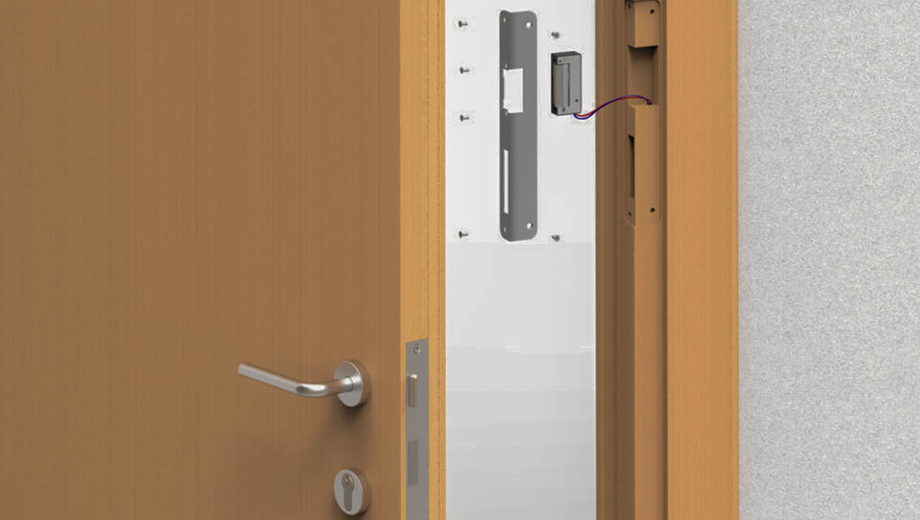A Comprehensive Guide to Understanding Electric Strikes

Electric Strikes are an important part of modern security and access control systems. Sutec allows you to easily convert traditional mechanical locksets into electronically operated ones in a manner that is well integrated with today’s security environment.
What is an Electric Strike?
Electric Strike — an electric strike (or sometimes called the electric strike lock) is NOT a standalone locking device. Rather, it is used to supplement traditional mechanical locksets so that they can be controlled through electronic means. This makes it possible to integrate these locks with modern access control systems, which is good news for both residential and commercial property owners.
Electric strikes are versatile, cost-effective and can be fitted to most mechanical bolt locks. They are usually installed in different doors types like wooden door, metal door, fireproofing door and community gate house. Their broad deployment makes them attractive for all parties seeking to improve their access control system.
How Electric Strikes Work
Essentially, an electric strike works by using a solenoid (also known as wire coil) that creates and electromagnetic pulse when power is supplied. This pulse activates a lever within the electric strike to push or pull, which will open and close the keeper latch respectively. A this feature then allows the mechanical lock latching to either stay in the recess within of strike or draw inside body of lock based on wanted.
At the most basic level, an electric strike replaces a mechanical lock’s standard strike plate to afford greater control and security
Fail-Safe Electric Strikes vs. Fail-Secure
Powered operation—In the case of electric strikes, they need a power source to operate and how that will affect their functionality determines on fail-type (Fail-safe or Fail-secure). All of which are absolutely integral in securing both life safety and property security.
- NO Fail-safe : Here, the electric strike is locked in a normal working mode and releases on power-failure. Because this arrangement is compulsory for fire exits and emergency doors so that when there comes an occasion of any kind of crisis, individuals ought to have the capacity to empty securely.
- Fail-Secure (Normally Open – NO)– In such setup, the electric strike is in a locked position when no power. This type is the best for saving properties when power fails. Some may advise you to pair fail-secure strikes with an uninterruptible power supply (UPS) for extra security that does not slack even when the lights are out.
Interchangeable configurations of NO/NC on some electric strikes (eg from Toplock) suit the door to many different security requirements.
Electric Strike Components
There are different things that go into electric strikes to make it functional and serve its purpose well.
- Electric Strike Body: The design of every electric strike catch consists of a body which contains the essential components – keeper latch, pushing lever (if applicable), joint hooking lever lock, solenoid and strike housing. These parts work with each other to make up the electric pulse in charge of securing.
- Hold Open Mechanism: In places where there are more people pushing the doors these kind of hold-open mechanism can be integrated, These will keep the door open for few seconds which makes its ease design and greater convenience since it doesn’t have to take repeat pulses.
- This is made of manual unlocking lever which works to mechanically operate the electric strike during power outages that doors may still be opened.
- Some keepers have a latch guard and once again this may not be strictly necessary (or even relevant to the RHR Kerlin application) but it provides clearance for movement of the latch. It fills in any voids where the door frame is exposed, for a neater look and increased security against tampering.
- DC12V & DC24V interchangeable design: Electric strikes are usually powered by either DC12V or AC36/48, likewise IDBC280works with both 12 Vdc and 24 Vdc. Certain types of locks, such as Toplock’s offerings can even be conveniently adapted on site to operate at different voltages. The use of AC voltage was common at first but has been almost discontinued in favor of DC because it is more stable and quiet.
Electric Strike Faceplates
An electric strike comes with a faceplate that secures the striker body onto the door frame. They are available in different sizes, materials (e.g. steel or aluminium) and angles to suit the door frame type & location of installation The faceplate type is the most common and is suitable for almost all door frames.
An angled faceplate maybe more appropriate forn onward edge of the door frame installation, to provide function as well as aesthetics. A keeper latch guard—or a short version of the angled faceplate—can sometimes be used to get where you want aesthetically without sacrificing function.
Therefore, electric strikes as well with the ones you can see at TopLockSecurity.com is one of those happy medium that provides an old mechanical lock system to be included in a current access control systems. Thanks to their wide array of configurations and components, these systems can be custom designed for residential or commercial security needs.





